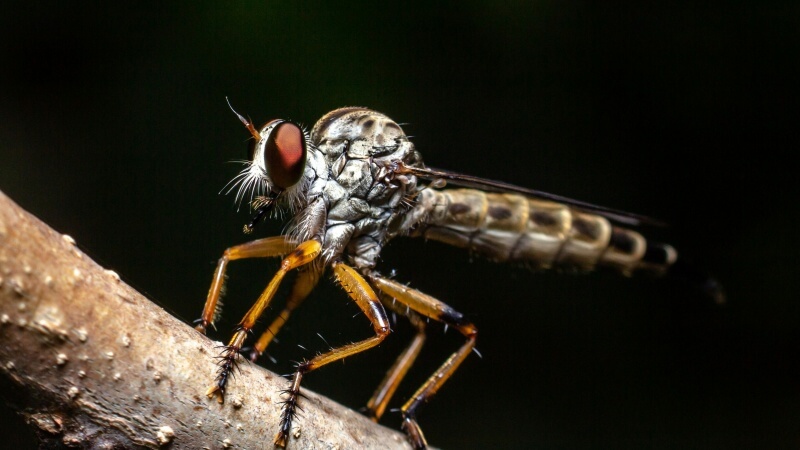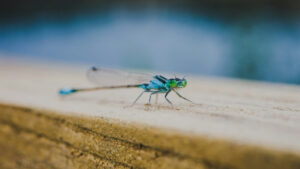
How To Design A Waterproof Mosquito Light
There’s something almost magical about a mosquito light—a beacon in the night that promises to shield us from the irksome buzz and bites of mosquitoes.

Imagine this scenario: as the hues of twilight blend into the evening sky, your mosquito light buzzes to life, standing guard against the night’s swarm of pesky invaders.
Then, with the first light of dawn, it automatically powers down, all achieved without any manual intervention from you.
This scenario isn’t just wishful thinking; it’s a practical, achievable upgrade that can significantly enhance the convenience and effectiveness of your mosquito deterrent efforts.
Adding a timer switch to your mosquito light is a simple, do-it-yourself project that promises not only to make your life easier but also to keep your outdoor spaces more enjoyable and mosquito-free.
This blog will guide you through each step of the process, ensuring that by the end, your mosquito light will be operating on a smart, automated schedule tailored just for you.
The integration of timer switches into your mosquito defense strategy is a game-changer, offering a perfect blend of convenience and efficiency.
By automating the operation of your mosquito light, you not only free yourself from the daily chore of turning it on and off, but also ensure that your outdoor areas are protected precisely when mosquitoes are most active.
At its core, a timer switch for your mosquito light operates on a straightforward yet ingenious principle. By setting the device to activate and deactivate at specific times, you’re aligning the light’s operation with peak mosquito activity periods. This strategic automation brings multiple benefits to the table:
Integrating a timer is akin to putting your mosquito defense on autopilot, ensuring protection is there when needed and conserving energy when it’s not.
The preparation phase for this project is straightforward, requiring only a handful of materials and tools. With these items in hand, you’re well on your way to enhancing your mosquito light with smart functionality:
Gathering these materials and tools before you start the installation ensures a smooth, uninterrupted process, paving the way for a successful upgrade of your mosquito defense system.
The journey to automating your mosquito light begins with selecting the perfect timer switch. This choice hinges on various factors, including the technical specifications of your light, your personal preferences, and the level of smart functionality you desire in your home.
By considering these factors, you can select a timer that not only meets your needs but also enhances the functionality and convenience of your mosquito light.
With your materials and tools ready, the installation process can begin. This step-by-step guide will walk you through adding a timer switch to your mosquito light, transforming it into a more efficient and autonomous system.
Ensuring safety is the first order of business. Before you begin, make absolutely certain that your mosquito light is disconnected from any power source. This precaution is essential to avoid the risk of electrical shock. The connection process involves a few key steps:
Adhering to these guidelines ensures a safe and correct installation, setting the stage for a seamless integration of the timer with your mosquito light.
With the physical connection established, the next step is to program the timer. This process is akin to setting a digital alarm clock and involves inputting your preferred on and off times for the light. Here’s how to navigate this phase smoothly:
If any issues arise during testing:
This phase focuses on ensuring your mosquito light operates seamlessly with the new timer, providing automated protection against mosquitoes.
Congratulations! With the timer now installed, your mosquito light is upgraded and ready to offer you enhanced protection and convenience. To maintain this new level of functionality, a few simple practices are recommended:
By adopting these maintenance practices, you ensure that your mosquito light, now equipped with a timer, continues to serve as an effective and hassle-free deterrent against mosquitoes.
Upgrading your mosquito light with a timer switch is a simple yet impactful modification that can significantly improve the convenience and effectiveness of your mosquito control strategy.
This smart addition not only automates the operation of your light, ensuring it’s active only when needed but also contributes to energy savings by preventing unnecessary usage.
By following the steps outlined in this guide, you’ve taken a significant step toward enhancing your outdoor living experience, making it more enjoyable and free from the nuisance of mosquitoes.
So, as you sit back and enjoy your serene, mosquito-free evenings, take a moment to appreciate the small but powerful role your mosquito light’s new timer switch plays in achieving this blissful state.
Can I install a timer switch on any type of mosquito light?
Yes, most mosquito lights can be enhanced with a timer switch, regardless of their type or brand. However, it’s essential to verify the electrical specifications of both the mosquito light and the timer switch to ensure compatibility. Always check the wattage and voltage requirements to avoid any mismatch that could lead to operational issues or safety hazards.
How do I choose the best time settings for my timer switch?
The optimal time settings for your timer switch depend on the mosquito activity patterns in your area. Generally, mosquitoes are most active during dusk and dawn. Setting your timer to activate the light during these periods can maximize efficiency and protection. Observing mosquito presence around your home and adjusting the timer accordingly can help fine-tune the settings for the best results.
What if my mosquito light and timer switch have different plug types?
If the plug types of your mosquito light and timer switch don’t match, you may need an adapter to connect them. Ensure that the adapter meets the electrical requirements of both devices. It’s crucial to use an adapter that supports the voltage and current rating of your mosquito light to maintain safe and effective operation.
Can using a timer switch with my mosquito light save money on electricity bills?
Absolutely! By automating the operation of your mosquito light to only function during peak mosquito activity hours, you’re minimizing wasted energy consumption. This targeted use ensures that the light is not operating unnecessarily during the day or late at night when mosquitoes are less active, leading to potential savings on your electricity bills over time.
Is it possible to integrate a smart timer switch with a home automation system?
Yes, if you opt for a smart timer switch, you can integrate it with your existing home automation system. This allows for remote control of your mosquito light through a smartphone app or voice commands, depending on your home automation setup. It adds an extra layer of convenience, enabling you to adjust settings or turn the light on and off from anywhere, at any time. When selecting a smart timer, ensure it’s compatible with your home automation platform to enjoy seamless integration.


There’s something almost magical about a mosquito light—a beacon in the night that promises to shield us from the irksome buzz and bites of mosquitoes.

Within the first few moments of considering a mosquito light, the idea transforms from a mere concept into a beacon of hope against the nightly

The moment you switch on a mosquito light, you declare war on those pesky insects. But what if I told you that you could turbocharge

The moment you notice your mosquito light acting more like a beacon for moths than a nemesis for mosquitoes, it’s a clear signal: a bulb

There’s something almost magical about a mosquito light—a beacon in the night that promises to shield us from the irksome buzz and bites of mosquitoes.

Within the first few moments of considering a mosquito light, the idea transforms from a mere concept into a beacon of hope against the nightly

The moment you switch on a mosquito light, you declare war on those pesky insects. But what if I told you that you could turbocharge

Imagine this scenario: as the hues of twilight blend into the evening sky, your mosquito light buzzes to life, standing guard against the night’s swarm
Copyright © 2025 mosquitokillerlight. All Rights Reserved.